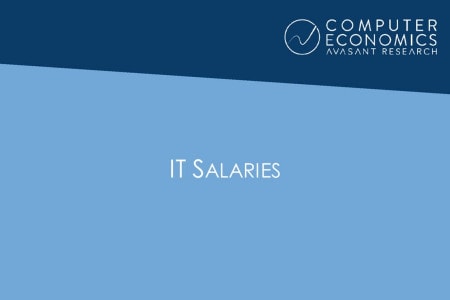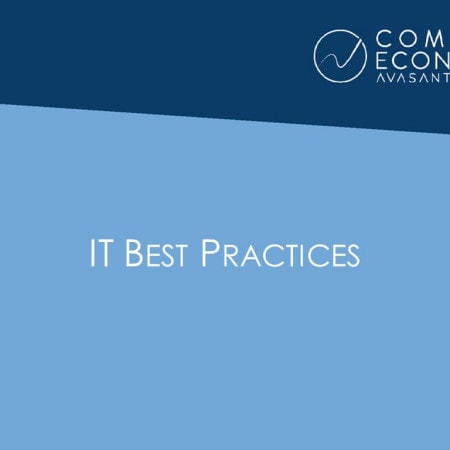-

Create E-Commerce Value Using Business Models (September 2002)
Sales of goods sold online in the U.S. will reach $1.7 trillion by 2004, according to Computer Economics. European firms will sell another $600 billion in the same period. Clearly, successful e-commerce sites can be highly profitable in such a market, but competitive pressures will limit the successes to those websites that correctly implement value drivers into their business models.
September, 2002
-

In-Home Computer Use Research (August 2002)
The National Science Foundation (NSF) has analyzed publicly accessible sources of data for analyzing access to, and use of, IT in the home that could be used to generate statistically valid findings that could be generalized across the United States.
August, 2002
-

Information Warfare Expert Urges Hackers Not to Strike Back But to Help Investigate Instead
It has become clear that many hackers want to use their skills to avenge the attack on the World Trade Center and the Pentagon. Michael Erbschloe, Vice President of Research and author of "Information Warfare: How to Survive Cyber Attacks," says that hackers can do other more constructive things at this time.
August, 2002
-

Online Human Resources Survey: The Fortune 50
Computer Economics surveyed Fortune 50 companies to determine how and to what extent these companies conduct human resources (HR) activities from their core, corporate website. As we expected, nearly all of these Fortune 50 corporate websites are being used to help the companies recruit new employees.
August, 2002
-

HR Succeeds on Web
In just a few short years, the web has revolutionized the way companies reach employees with information and basic human resource (HR) services, according to the latest Towers Perrin e-Track survey on Web-based HR self-service of 208 business executives.
August, 2002
-

Severance Payments Tumble
Cash severance payments to employees terminated in 2001 have declined by up to 20% from severance packages awarded in 1997, according to a recent survey.
August, 2002
-

Make Knowledge Management Pay Off Through New Collaborations (Dec 2000)
Knowledge management (otherwise known as information sharing, human capital, or intellectual property) has absorbed the efforts and money of many organizations. Unfortunately, many of these often expensive efforts have not led to positive returns. Studies of returns on these efforts frequently show that they fail to achieve their goals and sometimes are not even minimally effective. Typically three-quarters of these projects do not meet full expectations and half are total write-offs.
August, 2002
-

Digital Signatures Present New E-commerce Opportunities
The digital signature law signed by President Clinton in early summer became effective October 1, 2000. Although some aspects of the legislation will phase in over the next year, e-commerce organizations need to begin implementation now. There are a number of unresolved questions related to the Electronic Signatures in Global and National Commerce Act, otherwise known as E-Sign, that must be faced. Waiting until all of the answers are known, however, is not advised.
August, 2002
-

The E-Business Overview: IT Architecture
As e-business applications grow from departmental and divisional applications into critical enterprise systems, corporations are re-visiting their web architectures and fine-tuning their engines for optimal business performance. This analysis explores how e-business architecture can be built and optimized. We also take a look at recent architectural demands of flexibility and adherence to standards.
August, 2002
-

Opportunity Management Systems
The purpose of an Opportunity Management System (OMS) is to aid professional service providers in managing complex, confidential, and often sensitive business relationships between the provider and clients. To accomplish this, an OMS must be able to create intelligence in a form that can readily be used by staff with account management responsibility.
August, 2002
-

Cybercrime Fighting Update
The National Institute of Justice, an office of the U.S. Department of Justice, released in August 2000 a brief of a forthcoming report covering the state of cybercrime fighting capabilities in the United States. The brief emphasized that there is a compelling need to better address the requirements of state and local law enforcement agencies in detecting, investigating, and prosecuting individuals who commit electronic crimes. This article provides key findings from the report.
August, 2002
-

E-Insurance to Help Cover the Cost of E-Attacks
A new survey reveals many of the nation's largest organizations are not prepared to handle e-commerce and e-communication risks. From dot-com companies to brick-and-mortar businesses using the Internet to dispense information or sell products, few organizations have implemented the type of comprehensive e-risk management program that can limit electronic exposures and reduce e-liability.
August, 2002
-

Rentable Applications Give Little Businesses Big Tools
Expect to hear more about rentable applications that can be downloaded through your Internet Service Provider (ISP). The first of these types of applications, other than email and ISPs, made their debut to the public in the latter half of 1998.
August, 2002
-

IT Ergonomics Add New Element to TCO
The threat of litigation and the filing of widespread workmanâs compensation claims are forcing companies to find remedies for the poor ergonomics of standardized off-the-shelf IT products. To determine how large corporations are dealing with this problem, Computer Economics conducted a focus group of 16 companies that reported they had remedies in place. We also contacted five of our associates in the legal field and asked their opinion of potential corporate liability of IT ergonomics.
August, 2002
-

Corporate Expenditure Forecasts for CRM
Although Customer Relationship Management (CRM) systems are still in their technology development phase, companies have spent close to $4 billion on CRM software this year. Factoring in all surrounding expenses, CRM grew to a nearly $50 billion industry in 1999 and is expected to grow significantly through 2003.
August, 2002

 Grid View
Grid View List View
List View